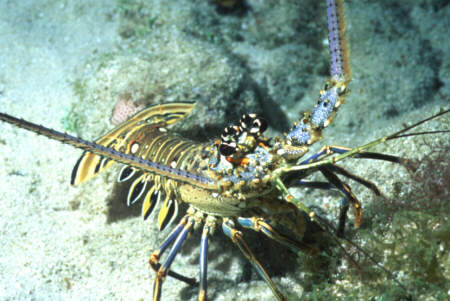 |
 |
All About Crustaceans |
|||||||||||||
|
The crustaceans (Crustacea) are a large group of arthropods (55,000 species), usually treated as a subphylum. They include various familiar animals, such as lobsters, crabs, shrimp and barnacles. They are variously found in marine and freshwater, with a few terrestrial members (such as woodlice). The scientific study of crustaceans is known as carcinology. Other names for carcinology are malacostracology, crustaceology, and crustalogy, and a scientist who works in carcinology is a carcinologist, a crustaceologist, or a crustalogist. Crustaceans have three distinct body parts: head, thorax, and abdomen (or pleon), although the head and thorax may fuse to form a cephalothorax. They have two pairs of antennae on the head, compound eyes, three pairs of mouthparts and a telson. Smaller crustaceans respire through their body surface by diffusion and larger crustaceans respire with gills. Crustaceans typically have a thick carapace on the dorsal side of their body. Their appendages are typically biramous, including the second pair of antennae (but not the first). Most crustaceans have separate sexes and are distinguished by appendages on the abdomen called swimmerets or, more technically, pleopods. The first (and sometimes the second) pair of pleopods are larger on the male than on the female. Terrestrial crabs (such as the Christmas Island red crab) mate seasonally and return to the sea to release the eggs. In many decapods, the eggs are retained by the females until they hatch into free-swimming larvae. Although crustaceans are rarer as fossils than trilobites are, a number of different types of crustaceans are common in the rocks of the Cretaceous period, as well as those of the Caenozoic era. Most of the smaller crustaceans, such as shrimp, have an exoskeleton which is somewhat delicate and for this reason their fossil record is comparatively poor. However, crustaceans such as crabs and lobsters have a thicker exoskeleton which is reinforced with calcium carbonate and so their fossil record is much fuller. The fossil record of barnacles is scarce, and little is known of their history prior to the Mesozoic era. Well preserved specimens are known from the rocks of the Cretaceous period and the Caenozoic era. The most well-known crustaceans, the Malacostraca (including crabs, lobsters, crayfish and shrimp), although widespread today, are only found sporadically as fossils. Most of the known fossil crabs are of forms which lived on the sea-floor or in a reef environment. In rocks such as the Gault clay from the Cretaceous period and the London clay from the Eocene period in England, fossil crabs may be found. The 'Lobster Bed' of the Greensand formation from the Cretaceous period which occurs at Atherfield on the Isle of Wight in England contains many well preserved examples of the small glypheoid lobster Mecochirus magna. The lithographic limestones from the Jurassic period of Solnhofen in Germany have long been famed for the many exceptionally preserved crab, lobster and shrimp fossils they have yielded (such as Aeger, Eryon, and Pseudastacus).
|
||||||||||||
All text is available under the terms of the GNU Free Documentation License


